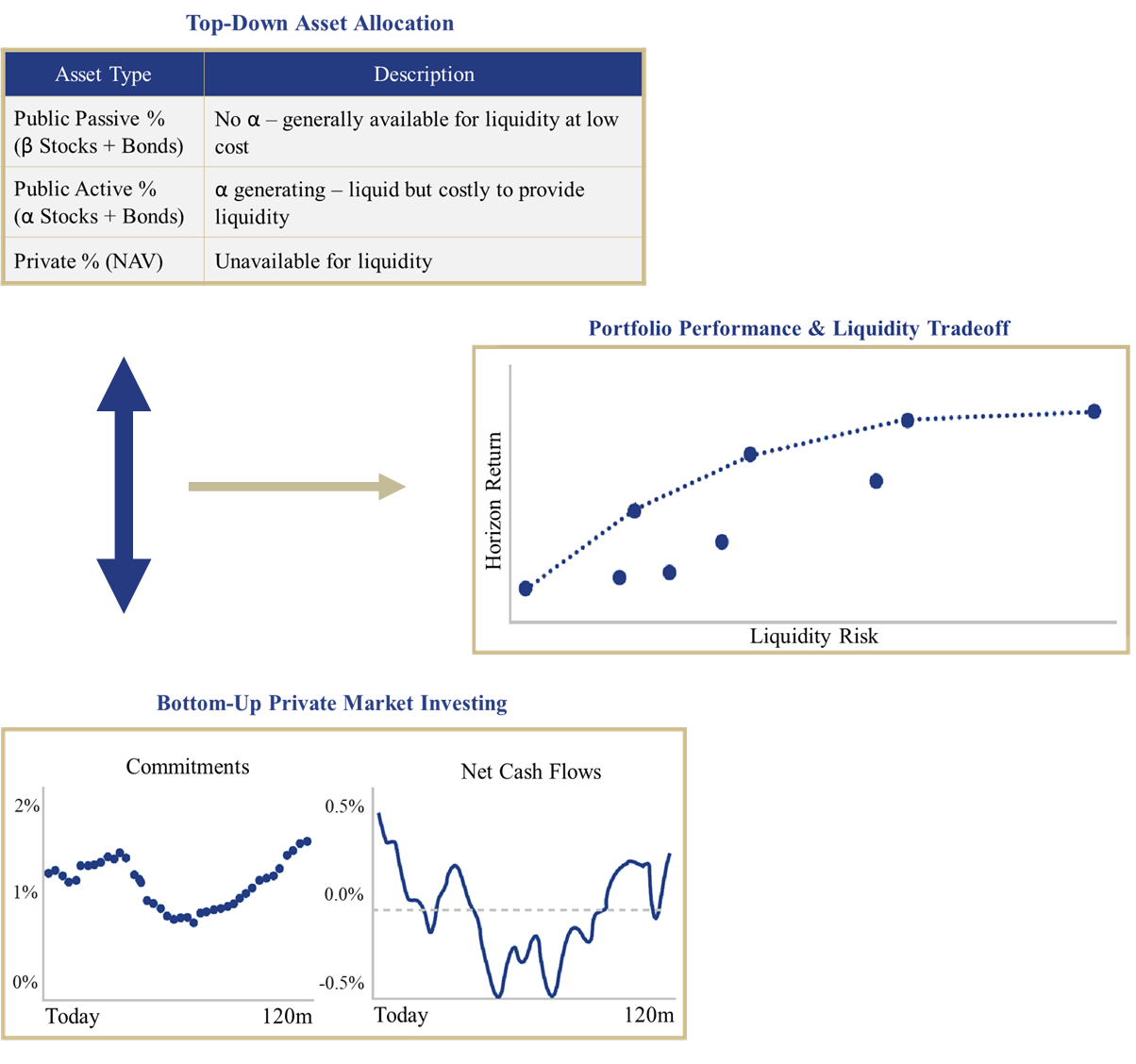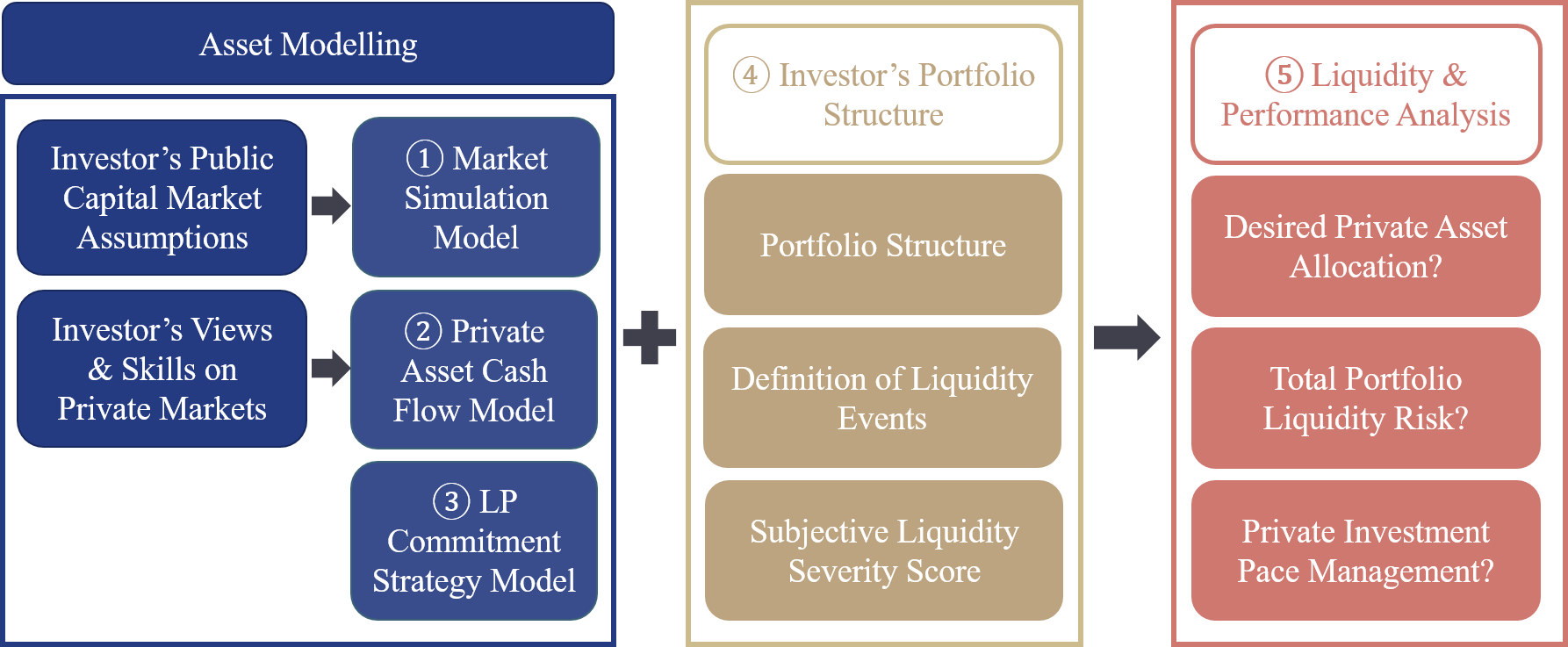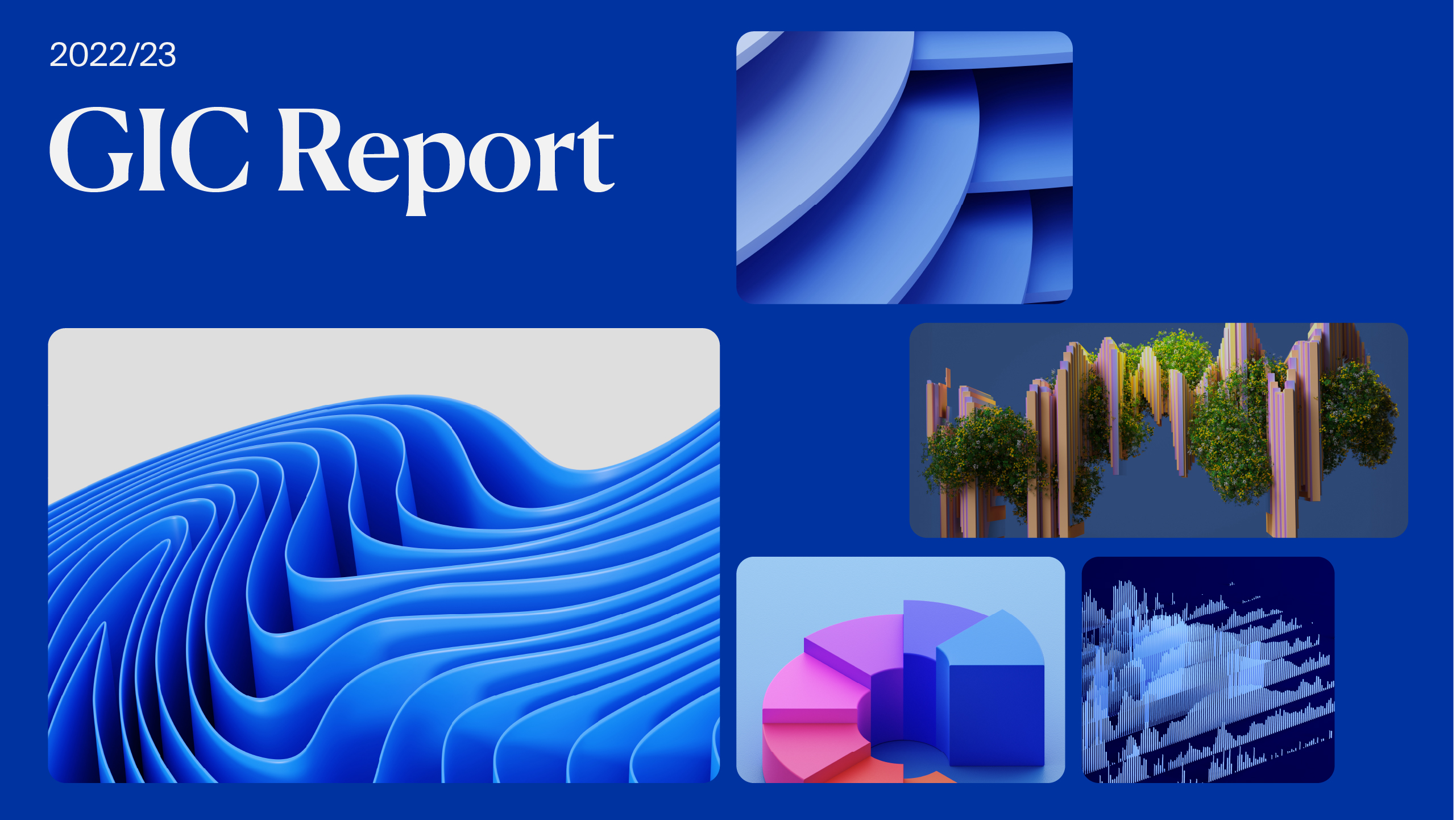This research is a collaboration between GIC EIS and PGIM IAS.
For Professional Investors Only. All investments involve risk, including the possible loss of capital. Please see the “Important Information” section for additional disclosures.
Executive summary
The search for higher returns and better diversification has led many institutional investors to allocate more capital to illiquid private assets. This has come at the cost of decreasing portfolio liquidity, as private assets are not easily sold in a short period of time and may be unable to meet immediate portfolio liquidity demands. At the same time, private asset investors may encounter additional and often hard to predict liquidity demands when GPs make capital calls stemming from prior commitments. Investors need to have a strong understanding of how the liquidity characteristics of private assets impact their portfolios.
Investors are increasingly faced with the difficult choice between potentially higher returns and greater liquidity. Given market uncertainty, the risk of failing to meet liability obligations or failing to capture attractive opportunities during market dislocations further complicates the decision. What is the right amount of private assets in one’s portfolio?
Leveraging the cross-asset research capability and experience of GIC EIS and PGIM IAS, we have enhanced and expanded PGIM’s asset allocation framework (OASIS™ – Optimal Asset allocation with Illiquid Assets) to formally integrate liquidity measurement and cash flow management into a multi-asset, multi-period portfolio construction process.
Figure 1: Interaction of Asset Allocation & Private Market Investing

Source: GIC EIS and PGIM IAS. Example shown for illustrative purposes only.
Investors can use this framework to analyze how allocations to illiquid private assets (a top-down decision), in combination with their private asset commitment strategy (a bottom-up decision), affect their portfolio’s ability to respond to liquidity demands (Figure 1).
Specifically, this framework can help investors address the following key asset allocation questions:
- How to formulate a private asset commitment strategy to manage private asset exposure and the uncertainty in timing and magnitude of cash flows over time?
- What should be the desired allocations (public vs. private, public passive vs. public active) given the investor’s liquidity risk tolerance?
- How would various market scenarios impact the portfolio’s liquidity and performance?
The OASIS framework is modular (Figure 2), with each underlying component customizable by the investor.
First, it begins by simulating the returns and risk of public and private assets in a multi-asset portfolio. The simulation can incorporate an investor’s own capital market assumptions. It also allows investors to express their views on future private asset performance (relative to public assets) and their fund-selection skills which can be an important performance driver. In addition, the framework introduces cash flow modelling which is consistent with and responsive to the underlying market environment.
Second, the framework uses the investor’s portfolio structure that specifies a “waterfall” rule for sourcing liquidity: Which assets to sell to meet a liquidity demand, starting with those that are the least disruptive and costly.
Last, bringing it all together, we apply the framework and show examples of how investors can analyse their portfolio’s performance and liquidity. This flexible and customizable framework can incorporate investors’ own assumptions regarding:
- Public asset performance and risk (beta and alpha);
- Private asset commitment strategy;
- Total portfolio cash flow needs and liquidity supply waterfall;
- Private asset performance and risk (relative to public assets) and fund-selection skill.
Figure 2. Flowchart of the OASIS Asset Allocation Framework

Source: GIC EIS and PGIM IAS. Example shown for illustrative purposes only.
For more information on this research, please download the executive summary for the contact details of the contributors to the paper.
Acknowledgements
We wish to thank Kevin Bong (GIC) and Dr. Taimur Hyat (PGIM) for their valuable contributions to this research.
About PGIM IAS
The PGIM Institutional Advisory & Solutions group advises institutional clients on a variety of asset allocation and portfolio construction topics, and delivers bespoke research based on an institution’s specific objectives. For inquiries and to learn more about PGIM’s investment advisory capabilities, email IAS@pgim.com or visit www.pgim.com/IAS.
About GIC EIS
GIC is a leading global investment firm established in 1981 to manage Singapore’s foreign reserves. As a disciplined long- term value investor, GIC is uniquely positioned for investments across a wide range of asset classes, including equities, fixed income, private equity, real estate and infrastructure. GIC’s Economics & Investment Strategy department (EIS) conducts bespoke economic and long-term thematic research, and guides GIC’s top-down portfolio design and management by constructing long-term portfolio investment policy, defining strategic asset allocation, undertaking medium-term strategy, as well as innovating alternative investment models. For more information on GIC, please visit www.gic.com.sg.
Important information
The information contained herein is collectively provided by GIC, Singapore’s sovereign wealth fund, GIC Private Limited, and its affiliates (collectively, “GIC”); and PGIM, Inc and its affiliated asset management companies located in jurisdictions around the world (collectively, “PGIM”). PGIM is the principal asset management business of Prudential Financial, Inc. (PFI). PGIM, Inc. is an investment adviser registered with the US Securities and Exchange Commission. PFI of the United States is not affiliated in any manner with Prudential plc, incorporated in the United Kingdom or with Prudential Assurance Company, a subsidiary of M&G plc, incorporated in the United Kingdom.
While GIC and PGIM have collaborated for purposes of conducting research and developing this paper, GIC and PGIM are not joint venturers, affiliated in any way, or collectively providing or offering any services or products.
PGIM, the PGIM logo and Rock design are service marks, and OASIS is a trademark, of PFI and its related entities, registered in many jurisdictions worldwide.
Past performance is no guarantee or reliable indicator of future results. All investments involve risk, including the possible loss of capital. These materials are for informational or educational purposes only. In providing these materials, GIC Private Limited and its affiliates and PGIM are not acting as your fiduciary.
Alternative investments are speculative, typically highly illiquid and include a high degree of risk. Investors could lose all or a substantial amount of their investment. Alternative investments are suitable only for long-term investors willing to forego liquidity and put capital at risk for an indefinite period of time. Equities may decline in value due to both real and perceived general market, economic and industry conditions. Investing in the bond market is subject to risks, including market, interest rate, issuer, credit, inflation risk and liquidity risk. Commodities contain heightened risk, including market, political, regulatory and natural conditions and may not be suitable for all investors. The use of models to evaluate securities or securities markets based on certain assumptions concerning the interplay of market factors, may not adequately take into account certain factors and may result in a decline in the value of an investment, which could be substantial.
The analysis in the paper is based on hypothetical modelling. There is no guarantee, and no representation is being made, that an investor will or is likely to achieve profits, losses or results similar to those shown. Hypothetical or simulated performance results are provided for illustrative purposes only and have several inherent limitations. Unlike an actual performance record, simulated results do not represent actual performance and are generally prepared through the retroactive application of a model designed with the benefit of hindsight. There are frequently sharp differences between simulated results and actual results. In addition, since trades have not actually been executed, simulated results cannot account for the impact of certain market risks such as lack of liquidity. There are several other factors related to the markets in general or the implementation of any specific investment strategy, which cannot be fully accounted for in the preparation of simulated results and all of which can adversely affect actual results.
All charts contained herein were created as of the date of this presentation, unless otherwise noted. Performance results for certain charts and graphs may be limited by date ranges, as stated on the charts and graphs. Different time periods may produce different results. Charts and figures are provided for illustrative purposes and are not an indication of past or future performance of any PGIM product or GIC investment.
These materials represent the views, opinions and recommendations of the author(s) regarding the economic conditions, asset classes, securities, issuers or financial instruments referenced herein, and are subject to change without notice. Certain information contained herein has been obtained from sources that PGIM and GIC believes to be reliable; however, PGIM and GIC cannot guarantee the accuracy of such information, assure its completeness, or warrant such information will not be changed. The information contained herein is current as of the date of issuance (or such earlier date as referenced herein) and is subject to change without notice. PGIM and GIC has no obligation to update any or all of such information; nor do we make any express or implied warranties or representations as to the completeness or accuracy or accept responsibility for errors. Any forecasts, estimates and certain information contained herein are based upon proprietary research and should not be considered as investment advice or a recommendation of any particular security, strategy or investment product. These materials are not intended as an offer or solicitation with respect to the purchase or sale of any security or other financial instrument or any investment management services and should not be used as the basis for any investment decision. No liability whatsoever is accepted for any loss (whether direct, indirect, or consequential) that may arise from any use of the information contained in or derived from this report. PGIM and its affiliates and GIC may make investment decisions that are inconsistent with the recommendations or views expressed herein, including for proprietary accounts of PGIM or its affiliates or GIC. The opinions and recommendations herein do not take into account individual client circumstances, objectives, or needs and are not intended as recommendations of particular securities, financial instruments or strategies to particular clients or prospects. No determination has been made regarding the suitability of any securities, financial instruments or strategies for particular clients or prospects. For any securities or financial instruments mentioned herein, the recipient(s) of this report must make its own independent decisions.
Solely with respect to PGIM delivery of this paper, in the United Kingdom and various European Economic Area (“EEA”) jurisdictions, the information is issued by PGIM Limited with registered office: Grand Buildings, 1-3 Strand, Trafalgar Square, London, WC2N 5HR. PGIM Limited is authorised and regulated by the Financial Conduct Authority of the United Kingdom (Firm Reference Number 193418) and duly passported in various jurisdictions in the EEA.
These materials are issued by PGIM Limited to persons who are professional clients or eligible counterparties for the purposes of the Financial Conduct Authority’s Conduct of Business Sourcebook.
In certain countries in Asia, information is presented by PGIM (Singapore) Pte. Ltd., a Singapore investment manager registered with and licensed by the Monetary Authority of Singapore. In Japan, information is presented by PGIM Japan Co. Ltd., registered investment adviser with the Japanese Financial Services Agency. In South Korea, for the information provided by PGIM information is presented by PGIM, Inc., which is licensed to provide discretionary investment management services directly to South Korean investors. In Hong Kong, information is presented by representatives of PGIM (Hong Kong) Limited, a regulated entity with the Securities and Futures Commission in Hong Kong to professional investors as defined in Part 1 of Schedule 1 of the Securities and Futures Ordinance. In Australia, this information is presented by PGIM (Australia) Pty Ltd. (“PGIM Australia”) for the general information of its “wholesale” customers (as defined in the Corporations Act 2001). PGIM Australia is a representative of PGIM Limited, which is exempt from the requirement to hold an Australian Financial Services License under the Australian Corporations Act 2001 in respect of financial services. PGIM Limited is exempt by virtue of its regulation by the Financial Conduct Authority (Reg: 193418) under the laws of the United Kingdom and the application of ASIC Class Order 03/1099. The laws of the United Kingdom differ from Australian laws. Pursuant to the international adviser registration exemption in National Instrument 31-103, PGIM, Inc. is informing you of that: (1) PGIM, Inc. is not registered in Canada and relies upon an exemption from the adviser registration requirement under National Instrument 31-103; (2) PGIM, Inc.’s jurisdiction of residence is New Jersey, U.S.A.; (3) there may be difficulty enforcing legal rights against PGIM, Inc. because it is resident outside of Canada and all or substantially all of its assets may be situated outside of Canada; and (4) the name and address of the agent for service of process of PGIM, Inc. in the applicable Provinces of Canada are as follows: in Québec: Borden Ladner Gervais LLP, 1000 de La Gauchetière Street West, Suite 900 Montréal, QC H3B 5H4; in British Columbia: Borden Ladner Gervais LLP, 1200 Waterfront Centre, 200 Burrard Street, Vancouver, BC V7X 1T2; in Ontario: Borden Ladner Gervais LLP, 22 Adelaide Street West, Suite 3400, Toronto, ON M5H 4E3; in Nova Scotia: Cox & Palmer, Q.C., 1100 Purdy’s Wharf Tower One, 1959 Upper Water Street, P.O. Box 2380 – Stn Central RPO, Halifax, NS B3J 3E5; in Alberta: Borden Ladner Gervais LLP, 530 Third Avenue S.W., Calgary, AB T2P R3.
IAS0326-100.






